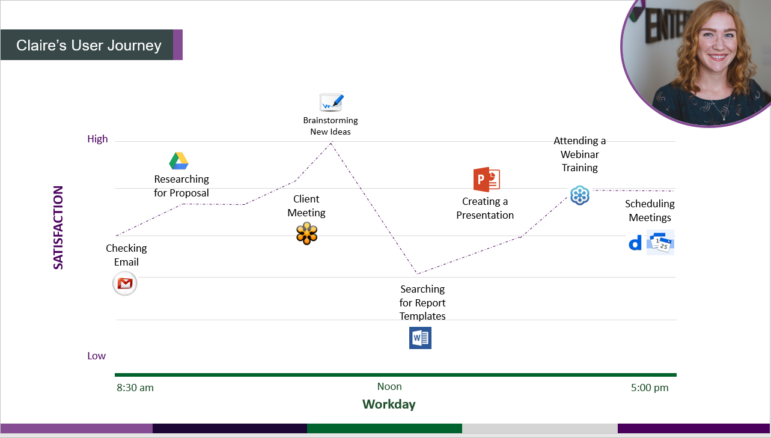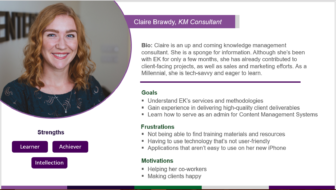User experience matters because users matter. A product could be built from the latest and greatest technology and best practices, but what good is it if no one is actually using it? As simple as this concept sounds, time and time again, we’ve seen product creators make decisions based on their own priorities and preferences rather than getting feedback from the people who will actually interact with the products that they’re creating. User Experience is a design approach that involves end users throughout the creation process to ensure that the product meets their needs and desires.
Here are some key questions you should be asking to determine whether you have a user-centric approach to product development:
Have you engaged directly with your users?
When you kick off any product development initiative, engage directly with your ends users as soon as possible so that they have the opportunity to voice their ideas, challenges, and unique situations. At EK, we’ve found that the best way to do this is through a well-facilitated workshop. When end users are involved with an initiative from the very start, they are more likely to stay engaged throughout the design, development, and testing process. Open communication, transparency, and collaboration with end-users will make it easier for them to adopt change and see the value in what you’re doing.
Have you personified your users?
At the beginning of the projects we undertake at EK, we work with our clients to create user personas. Personas put a face and a name to a user group who will be interacting with the taxonomies, websites, and web applications we build. It allows us to truly understand our end users and design solutions that cater to each of their specific needs. Here’s an example of a user persona:
In this example, EK has designed our internal knowledge management system to accommodate Claire’s needs and desires. We’ve made all of the information she needs to do her job easily accessible to her using any of her devices. We’ve also organized our information using a simple yet descriptive taxonomy, as well as integrated all of the tools we use, so that she doesn’t have to spend too much time looking for what she needs.
Have you mapped their potential interaction with your product?
Beyond just who our end users are, it’s important to know what will lead them to our solutions, how they’ll use them, and where these solutions will ultimately take them. This is where user journeys come in. User journeys map out a typical path that a user would take as they interact with what we’ve built. Knowing their starting point, ending point, and other touch points helps us to consider all of the factors that are unique to their experience. Here’s an example of a user journey:

Have you asked for their feedback early in the development process?
There are many ways to ask users for their feedback. What’s critical is that you ask them for their feedback before you start the design process, during the design process, and after the design process. Include your end users in the discovery phase to make sure you’ve captured all of their challenges and latent desires. As you design your solution, ask them for their feedback even if you only have a proof of concept or prototype. Lastly, watch them use your your product when it’s finally built. Observing your end users actually use your product will bring insights into ways to improve it.
Have you gauged the features that are important to them?
A good design is one that evolves as the needs and characteristics of your users change. Make sure to set up a process to continually improve on what you’ve built so that you’re able to maintain and exceed user satisfaction. A prioritized backlog of features can help you to track what features to build next after you’ve rolled out your Minimum Viable Product (MVP).
Conclusion
These are the most critical questions to ask regardless of whether your product is a website, web application, taxonomy, piece of content like a blog, knowledge management system, or an actual physical product. User experience is important because end users have options. They can always choose to use another product or if there are no similar products, they’ll create their own workaround to achieve their objectives.
Interested in learning more about how to apply user experience principles to your design process? Contact Enterprise Knowledge at info@enterprise-knowledge.com.

